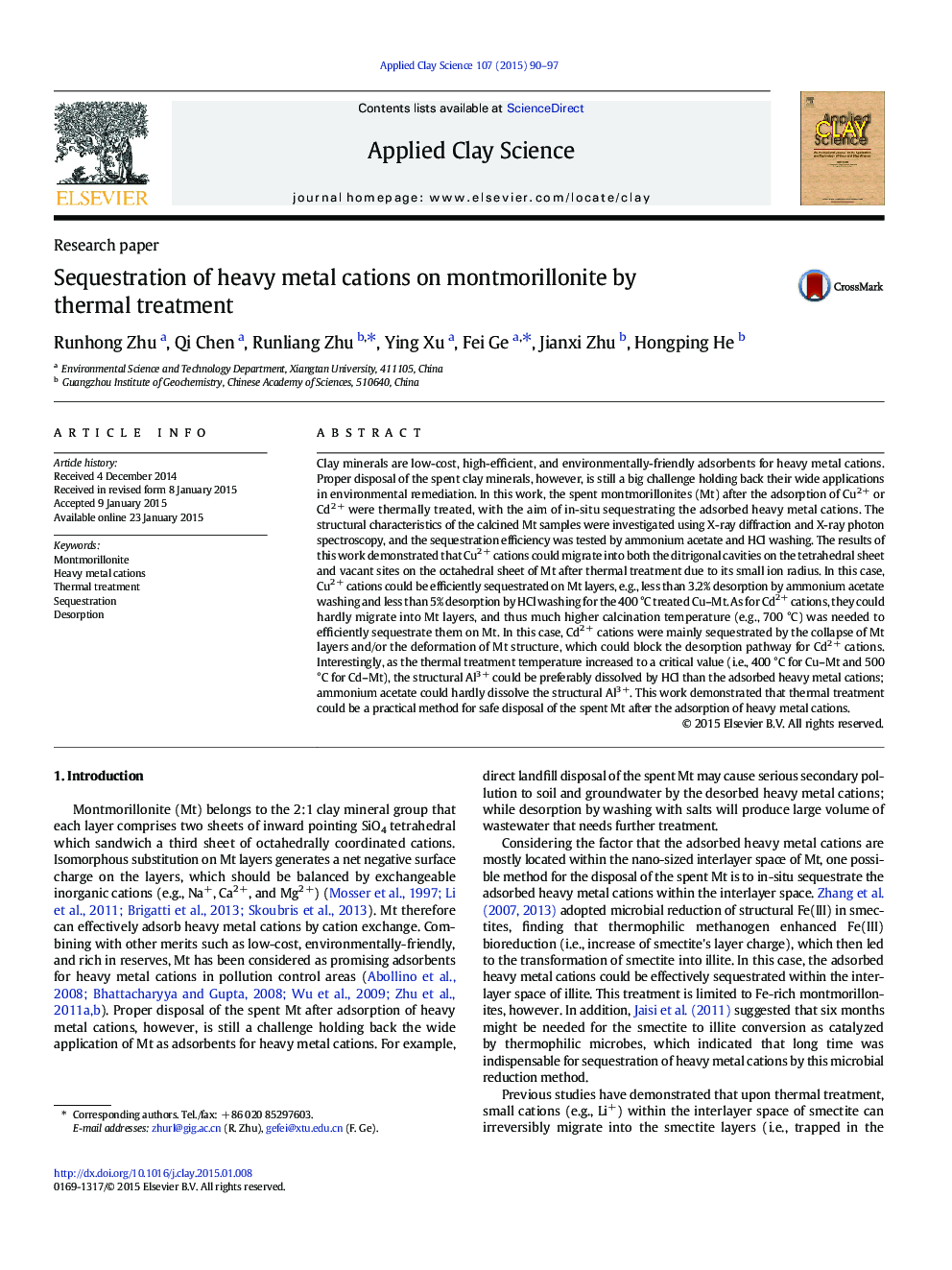| کد مقاله | کد نشریه | سال انتشار | مقاله انگلیسی | نسخه تمام متن |
|---|---|---|---|---|
| 1694532 | 1519072 | 2015 | 8 صفحه PDF | دانلود رایگان |
• Cu2 + and Cd2 + can be sequestrated on Mt by calcination.
• Sequestration efficiency increases with calcination temperature.
• Cu2 + could migrate into Mt layers under calcination.
• Cd2 + was fixed within the collapsed interlayers of Mt by calcination.
• HCl can desorb the structural Al3 + from Mt after calcination.
Clay minerals are low-cost, high-efficient, and environmentally-friendly adsorbents for heavy metal cations. Proper disposal of the spent clay minerals, however, is still a big challenge holding back their wide applications in environmental remediation. In this work, the spent montmorillonites (Mt) after the adsorption of Cu2 + or Cd2 + were thermally treated, with the aim of in-situ sequestrating the adsorbed heavy metal cations. The structural characteristics of the calcined Mt samples were investigated using X-ray diffraction and X-ray photon spectroscopy, and the sequestration efficiency was tested by ammonium acetate and HCl washing. The results of this work demonstrated that Cu2 + cations could migrate into both the ditrigonal cavities on the tetrahedral sheet and vacant sites on the octahedral sheet of Mt after thermal treatment due to its small ion radius. In this case, Cu2 + cations could be efficiently sequestrated on Mt layers, e.g., less than 3.2% desorption by ammonium acetate washing and less than 5% desorption by HCl washing for the 400 °C treated Cu–Mt. As for Cd2 + cations, they could hardly migrate into Mt layers, and thus much higher calcination temperature (e.g., 700 °C) was needed to efficiently sequestrate them on Mt. In this case, Cd2 + cations were mainly sequestrated by the collapse of Mt layers and/or the deformation of Mt structure, which could block the desorption pathway for Cd2 + cations. Interestingly, as the thermal treatment temperature increased to a critical value (i.e., 400 °C for Cu–Mt and 500 °C for Cd–Mt), the structural Al3 + could be preferably dissolved by HCl than the adsorbed heavy metal cations; ammonium acetate could hardly dissolve the structural Al3 +. This work demonstrated that thermal treatment could be a practical method for safe disposal of the spent Mt after the adsorption of heavy metal cations.
Figure optionsDownload as PowerPoint slide
Journal: Applied Clay Science - Volume 107, April 2015, Pages 90–97
